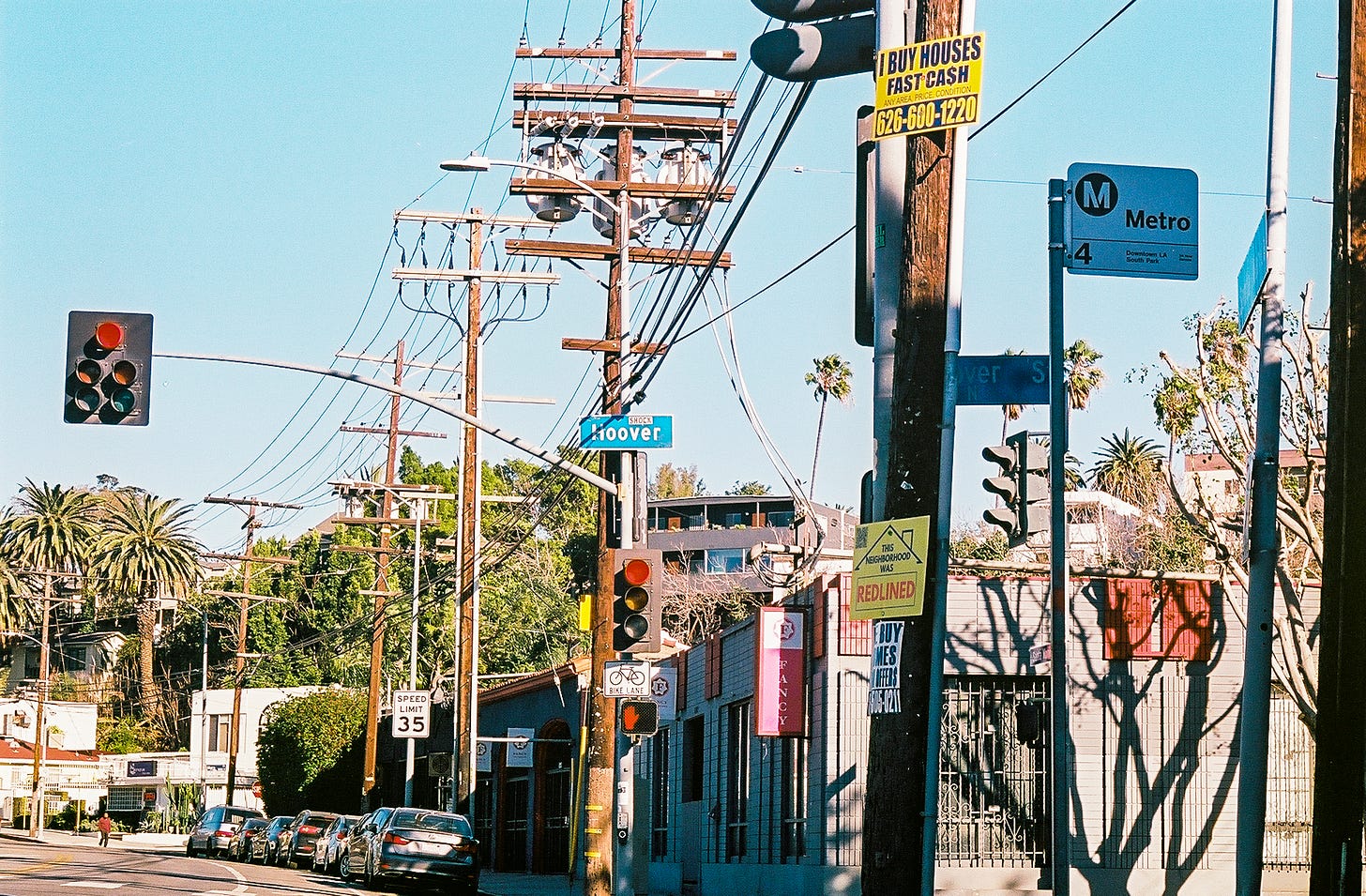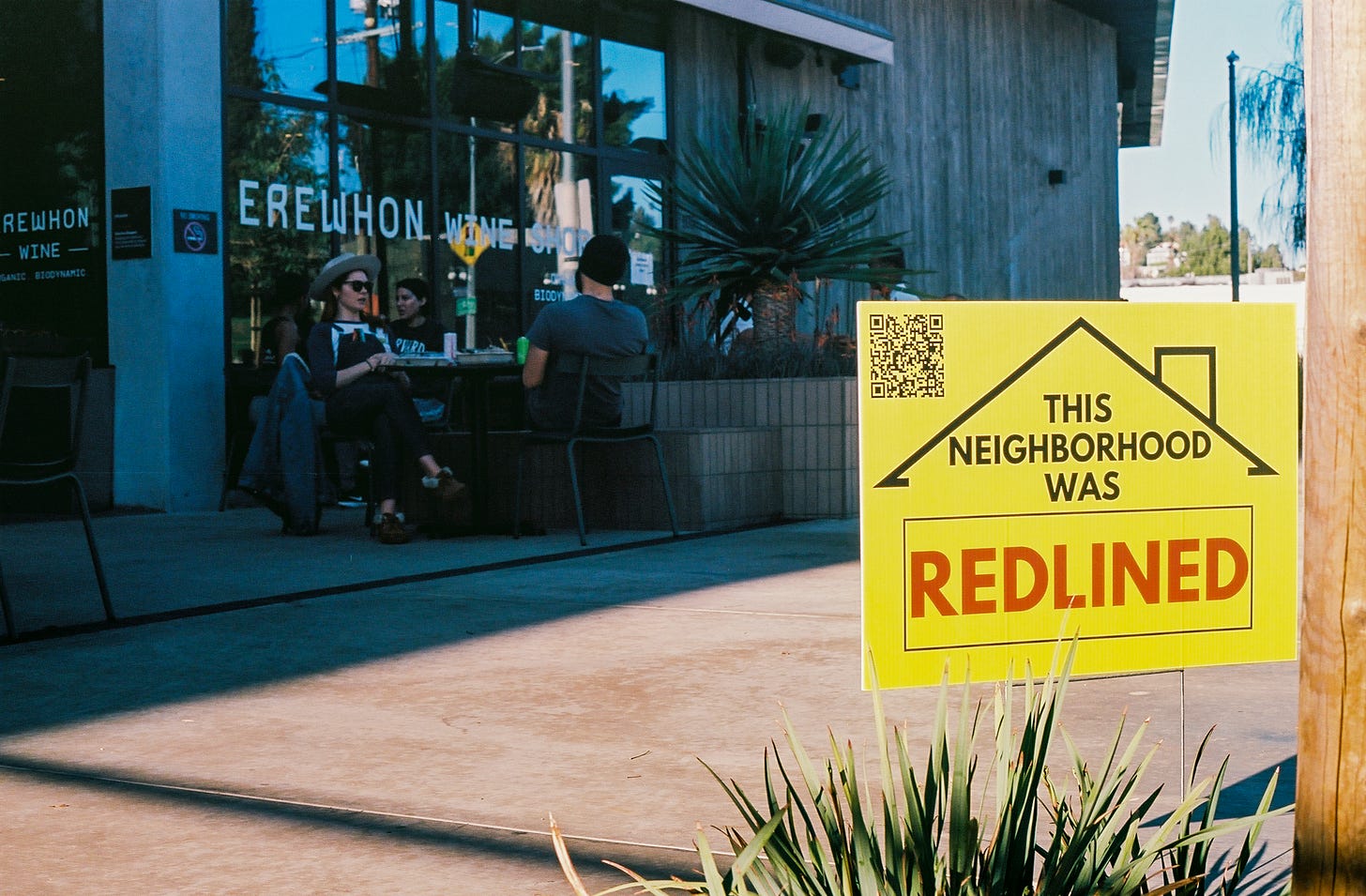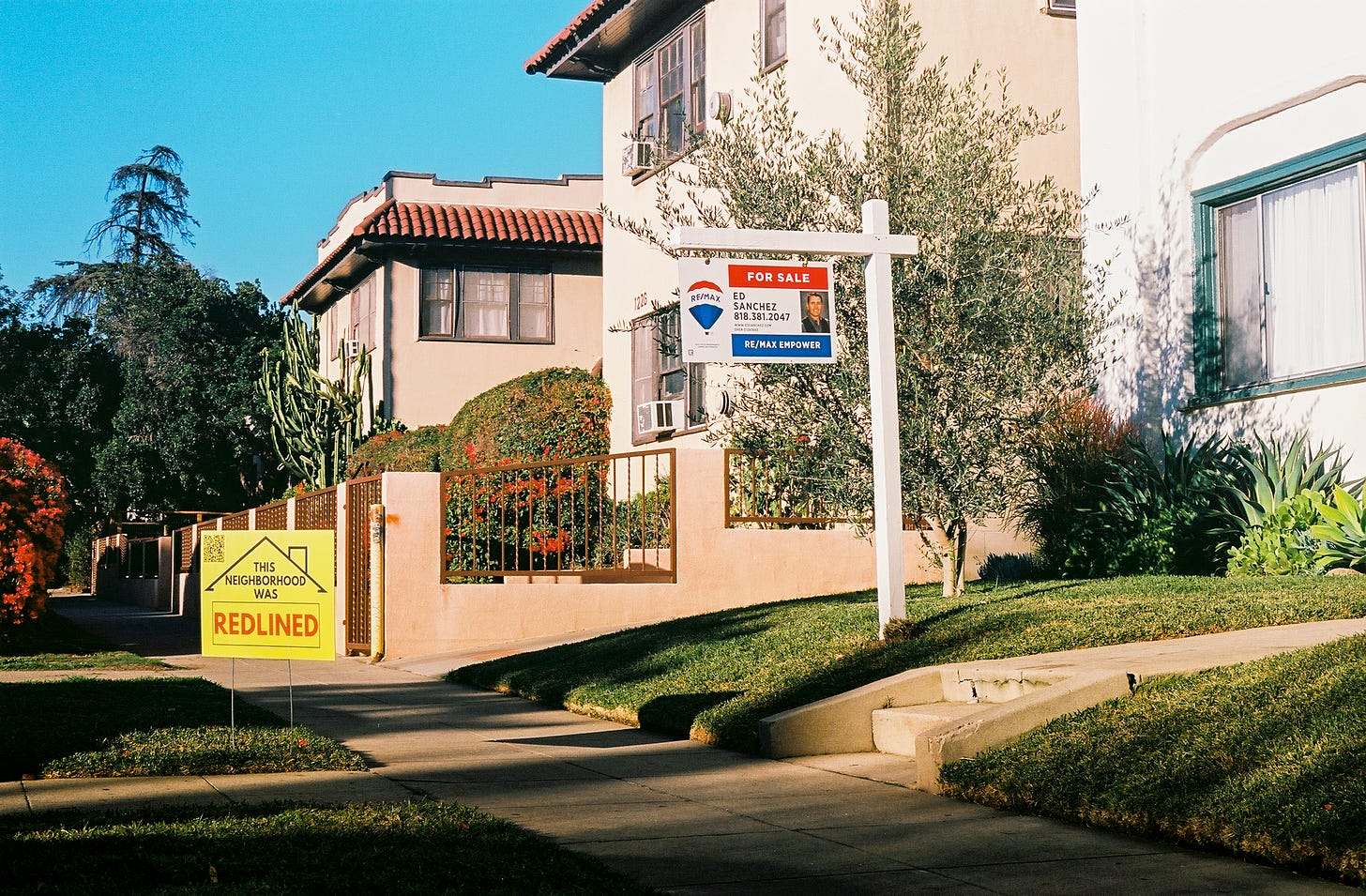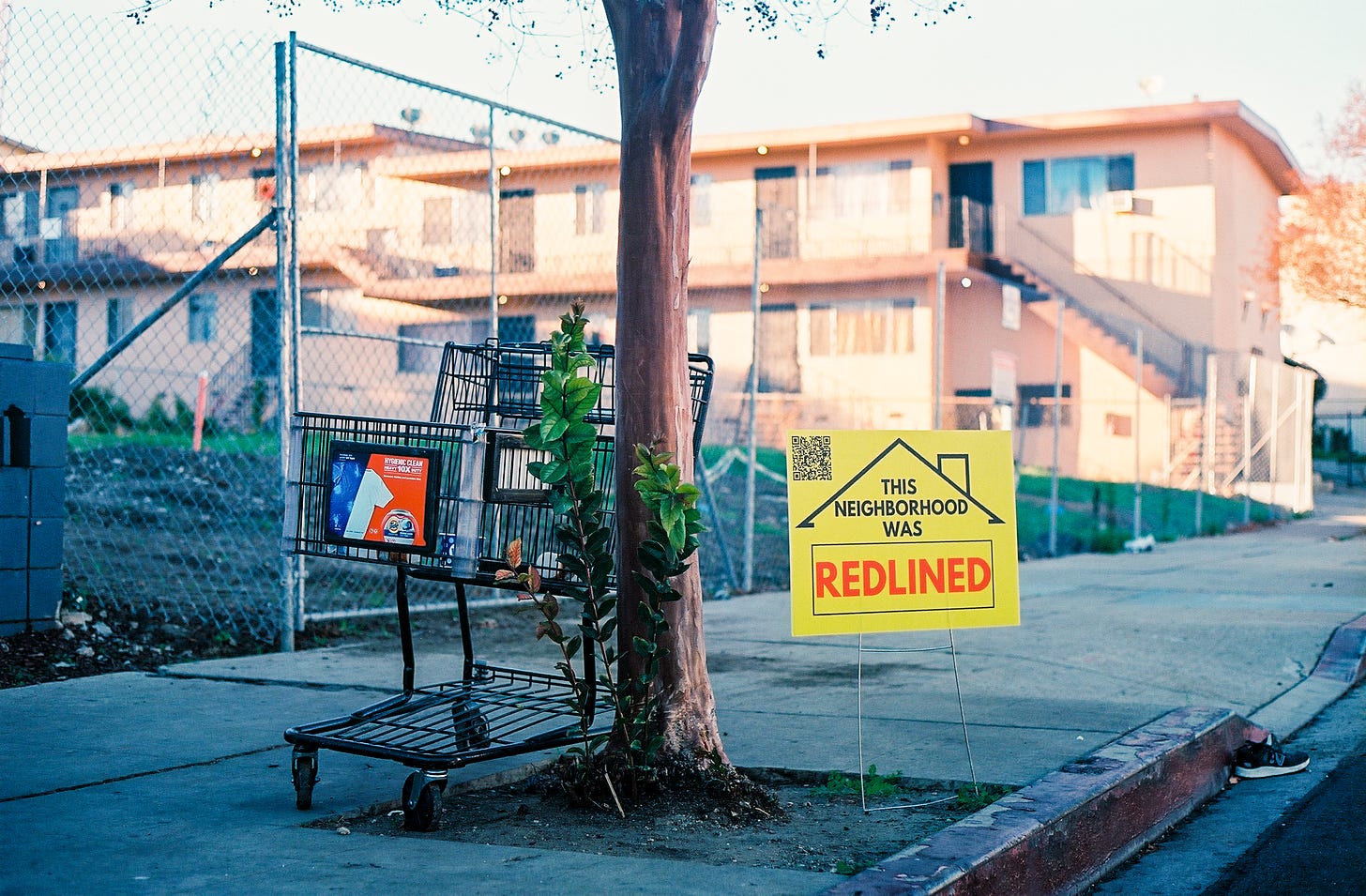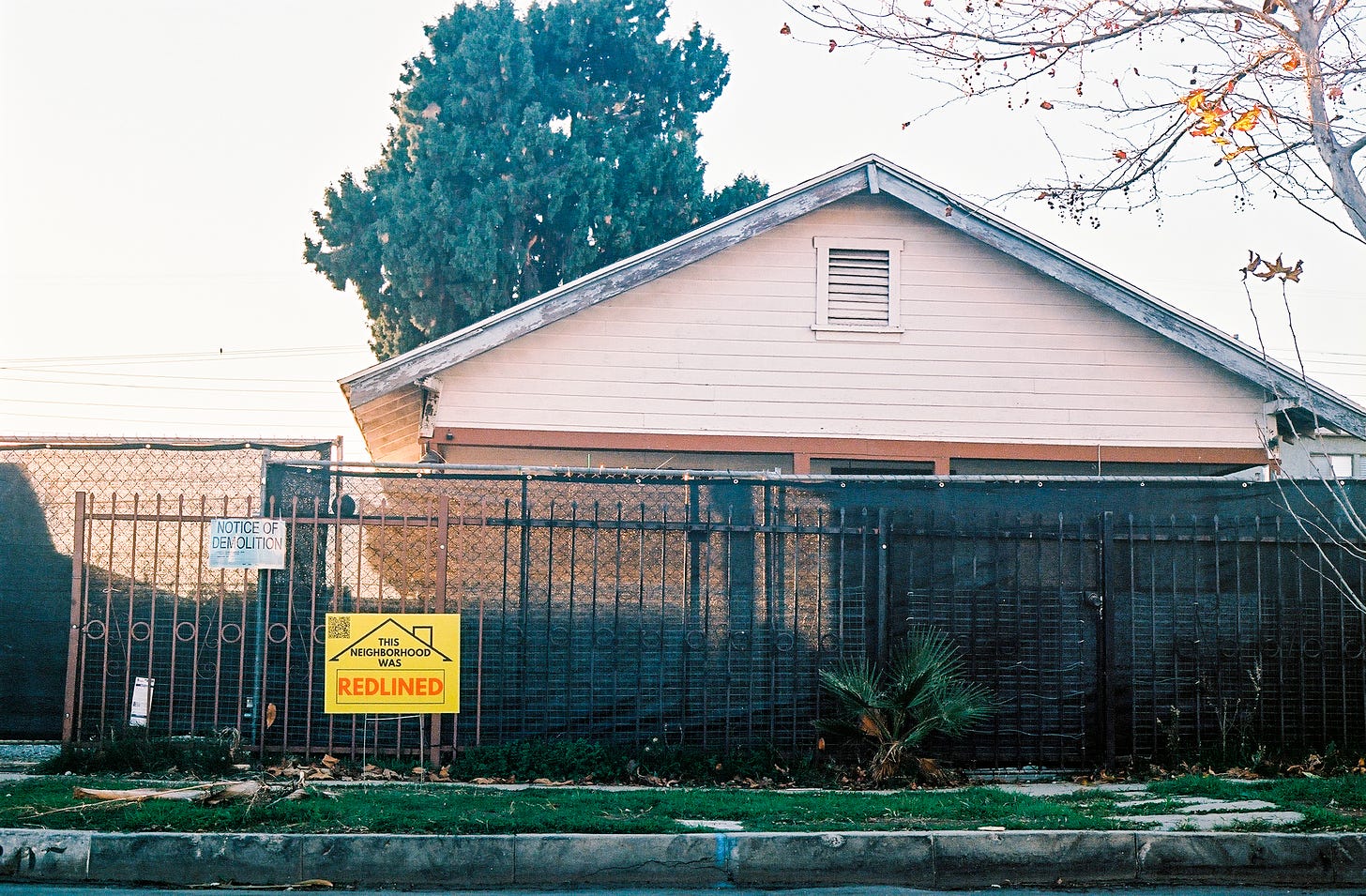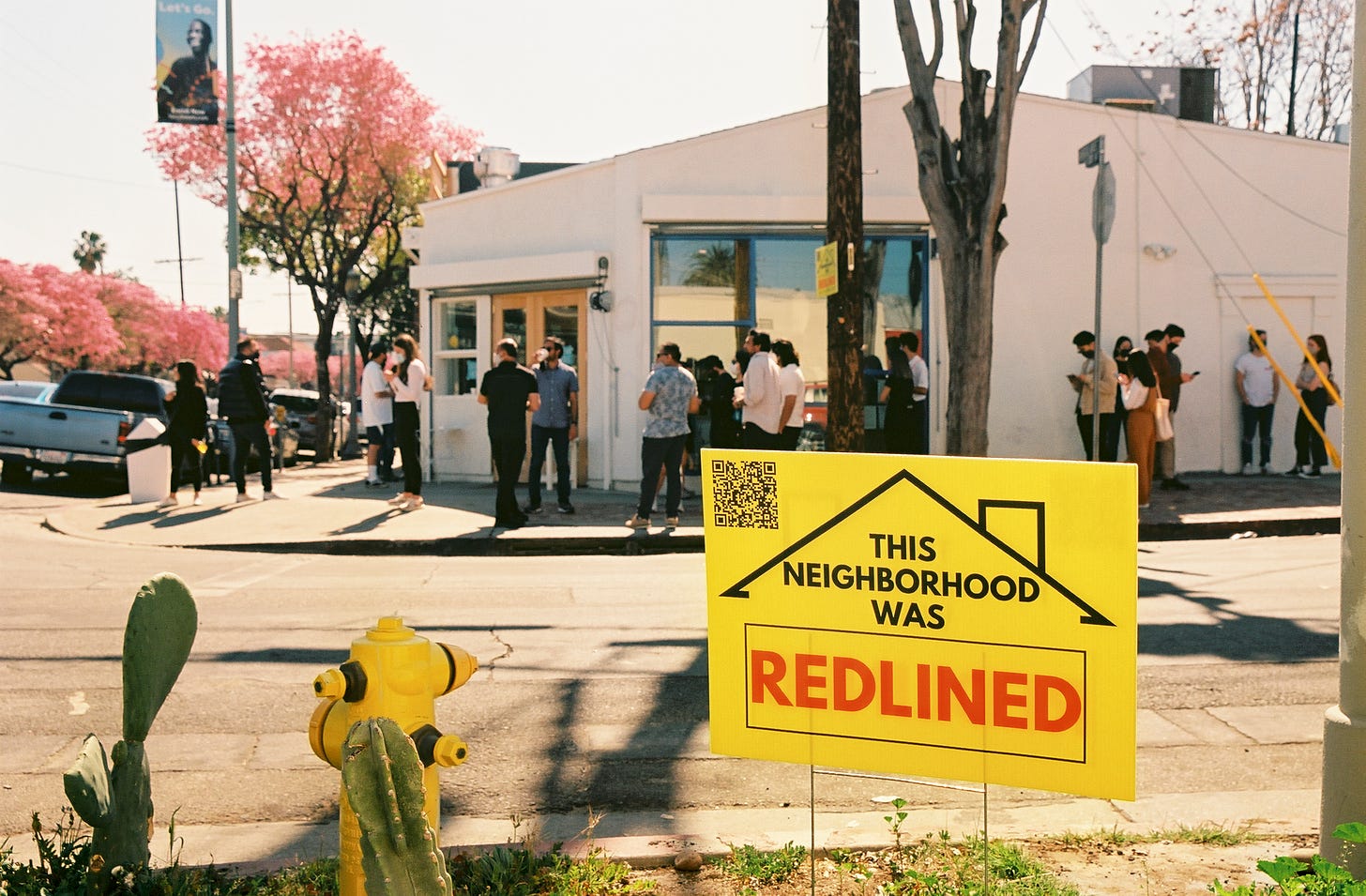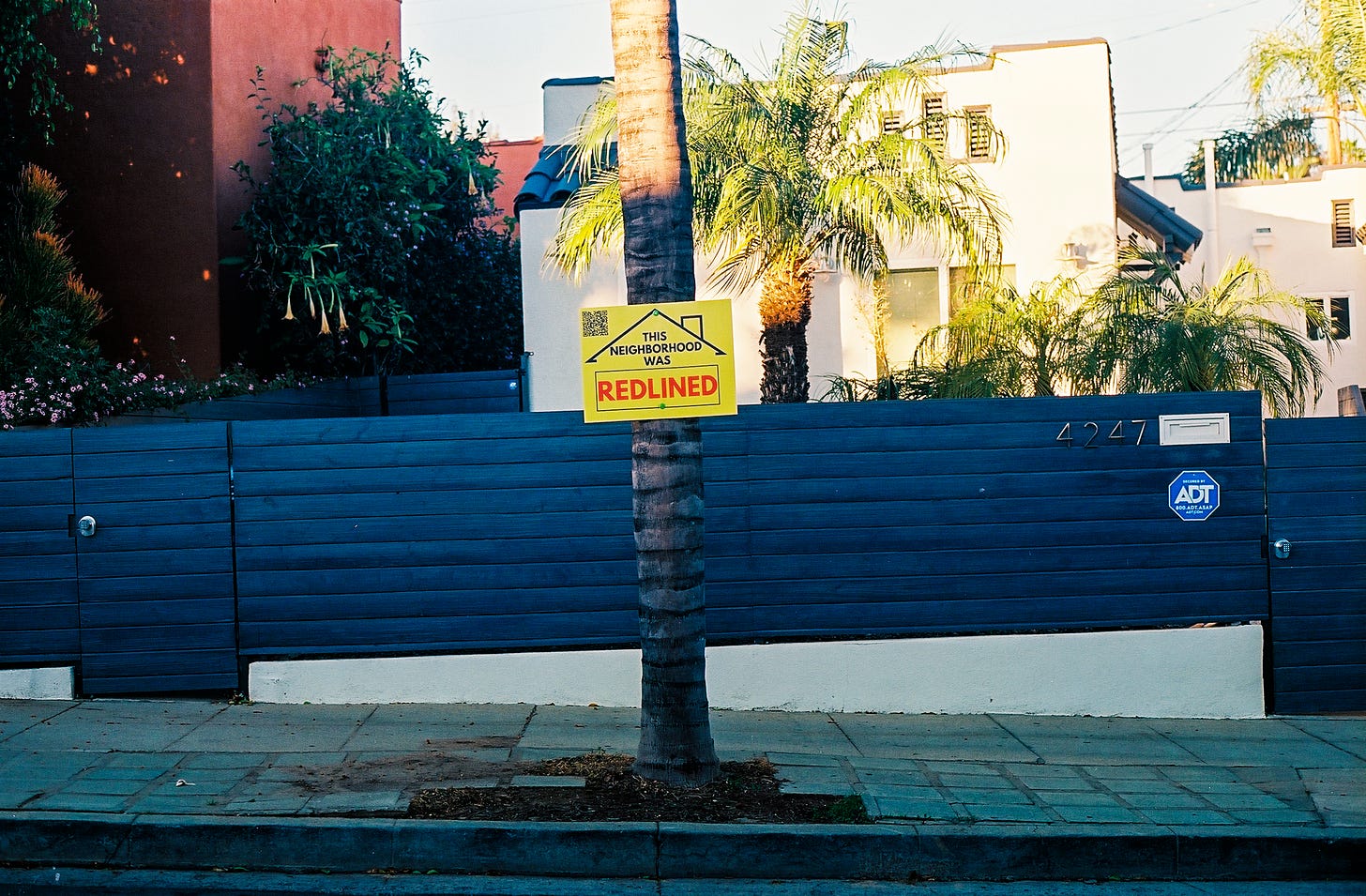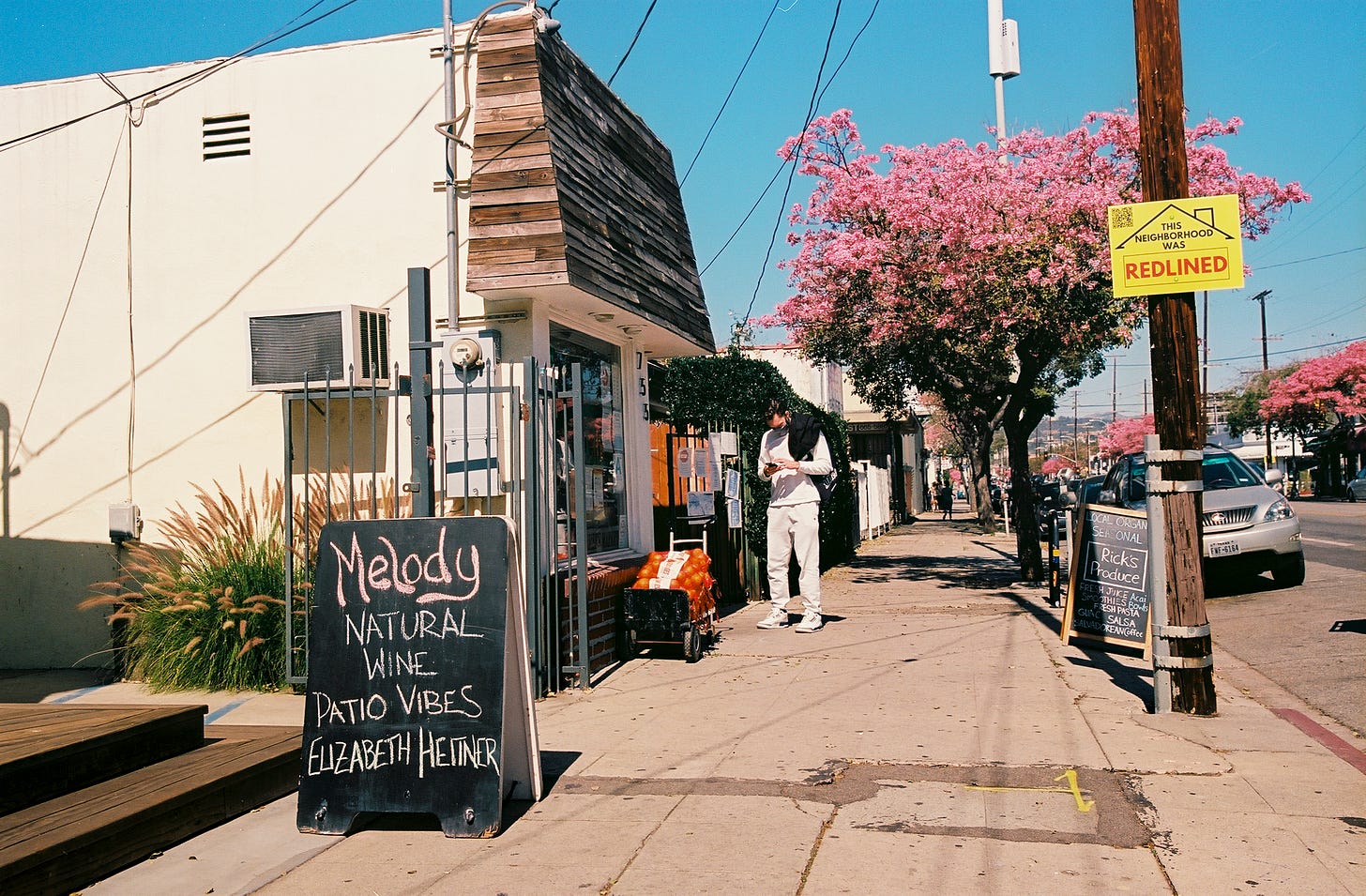If you have been following along with us throughout the month of September, you have, by now, read about the history of redlining in Virgil Village, a sub-neighborhood in East Hollywood. You have also read about some of the families and individuals who built their lives in this area and who lived through decades of housing discrimination, state violence in the form of internment camps, and other forms of systemic racism. This reporting work grew out of our 2021 panel series, which also included an art and an education campaign aimed at providing local residents and other interested people with information about the history of East Hollywood.
When J.T. and Samanta first approached me in the fall of 2020 about the idea of a town hall for our neighborhood, we quickly started brainstorming ideas for a street art project that would draw attention to the area’s historical designation as formerly redlined. I designed a sign in bright yellow that reads “This Neighborhood Was Redlined” and that is meant to mimic the “We Buy Houses Cash” signs that adorn almost every electrical pole around us.
Research shows that neighborhoods like ours were primed for this current moment of gentrification by policy decisions like redlining, which disinvested from immigrant communities and especially Black communities. Because our neighborhood was (and arguably still is) redlined, you do not, in Virgil Village, see as many instances of intergenerational wealth in the form of property ownership as you see a mile or so north in Los Feliz and Franklin Hills. And because there is not much long-term property ownership, most people living and working in this neighborhood are renters who utilize residential and commercial spaces owned by people outside of the neighborhood. As new businesses with more capital and new residents with more purchasing power arrive, landlords and developers recognize the possibilities for profiting off this wealthier demographic. But the side effects of these changes in demographics mean that those same developers and landlords are forcing people out of their homes and businesses through a variety of tactics, the most common one being increased rent.
“We Buy Houses Cash” signs appear most commonly in neighborhoods like ours where inherited wealth in the form of property does not really exist, and where residents might feel pressured or encouraged to take what little money they can get for property they do own so that they can use that money to relocate to somewhere more affordable. For many of us, “We Buy Houses Cash” signs indicate that the neighborhood as we know it is becoming something entirely different.
I wanted to play with the visual aesthetics of these signs in a way that allowed people walking the streets to draw a correlation between the history of redlining and our present circumstances where developers and landlords can profit off of houses they buy for cash, which they then flip and sell/ rent at a much higher rate.
One of my favorite and unexpected consequences of gathering a street team and having them post 100 of these signs across the neighborhood was having people in other formerly redlined cities across the U.S. reach out and ask if they could hang the signs in their neighborhoods as well. Many of the struggles Virgil Village is facing are shared across the United States.
The placement of the “This Neighborhood Was Redlined” signs was strategic and meant to draw attention to the disparities created by the past and the present colliding in our current ecosystem of gentrification. All photographs of these signs were taken by Samanta Helou Hernandez in March 2021.
The posts for this month sometimes reference a woman from our neighborhood named Karen Burch, whose family lived in the J-Flats/Virgil Village area for many generations, including when the neighborhood became redlined. Burch turns 70 at the end of this month and her niece is currently fundraising for her birthday to support Karen as she continues working on a book about her family’s story.




